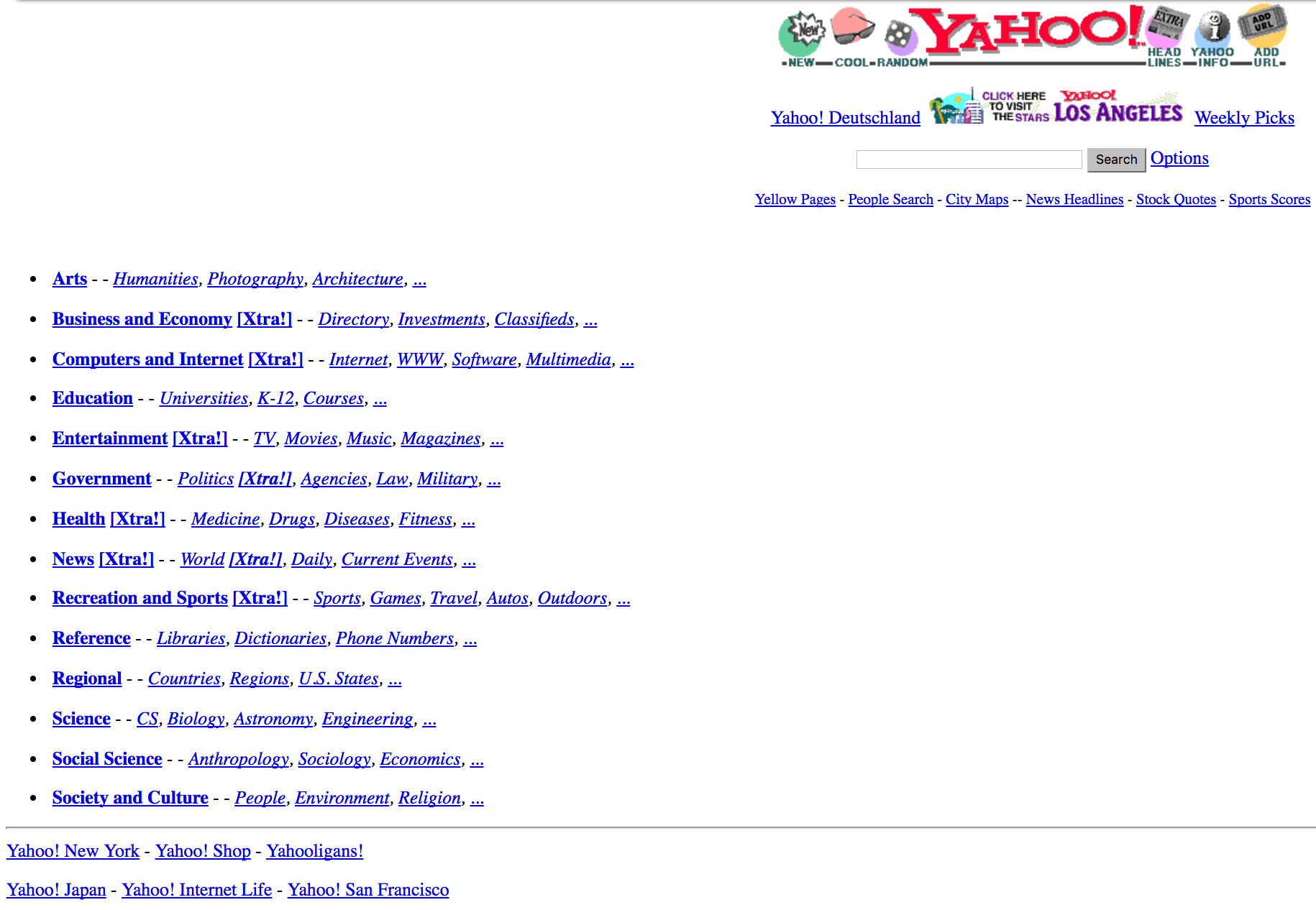The first version of the WWW relied exclusively on web pages and hyperlinks between them, a concept kept until present times. It was mostly read-only, with limited support for interaction between the user and the web page. Brick and mortar companies were using it to put up their informational pages. Finding websites could only be done using hierarchical directories like Yahoo! and DMOZ. The web was meant to be an information portal.
This, while not being Sir Tim Berners-Lee's vision, allowed media outlets such as the BBC and CNN to create a digital presence and start pushing out information to the users. It revolutionized information access as everyone in the world could get first-hand access to quality information at the same time.
Web 1.0 was totally device and software independent, allowing for every device to access all information. Resources were identified by address (the website's URL) and open protocols (GET, POST, PUT, DELETE) could be used to access content resources.
Hyper Text Markup Language (HTML) was used to develop web sites that were serving static content. There was no notion of Cascading Style Sheets (CSS) as positioning of elements in a page could only be modified using tables and framesets were used extensively to embed information in pages.
This proved to be severely limiting and so browser vendors back then started adding custom HTML tags like <blink> and <marquee> which lead to the first browser wars, with rivals Microsoft (Internet Explorer) and Netscape racing to extend the HTTP protocol's functionality. Web 1.0 reached 45 million users by 1996.
Here is the Lycos start page as it appeared in Web 1.0 http://www.lycos.com/:

Yahoo as appeared in Web 1.0 http://www.yahoo.com:

